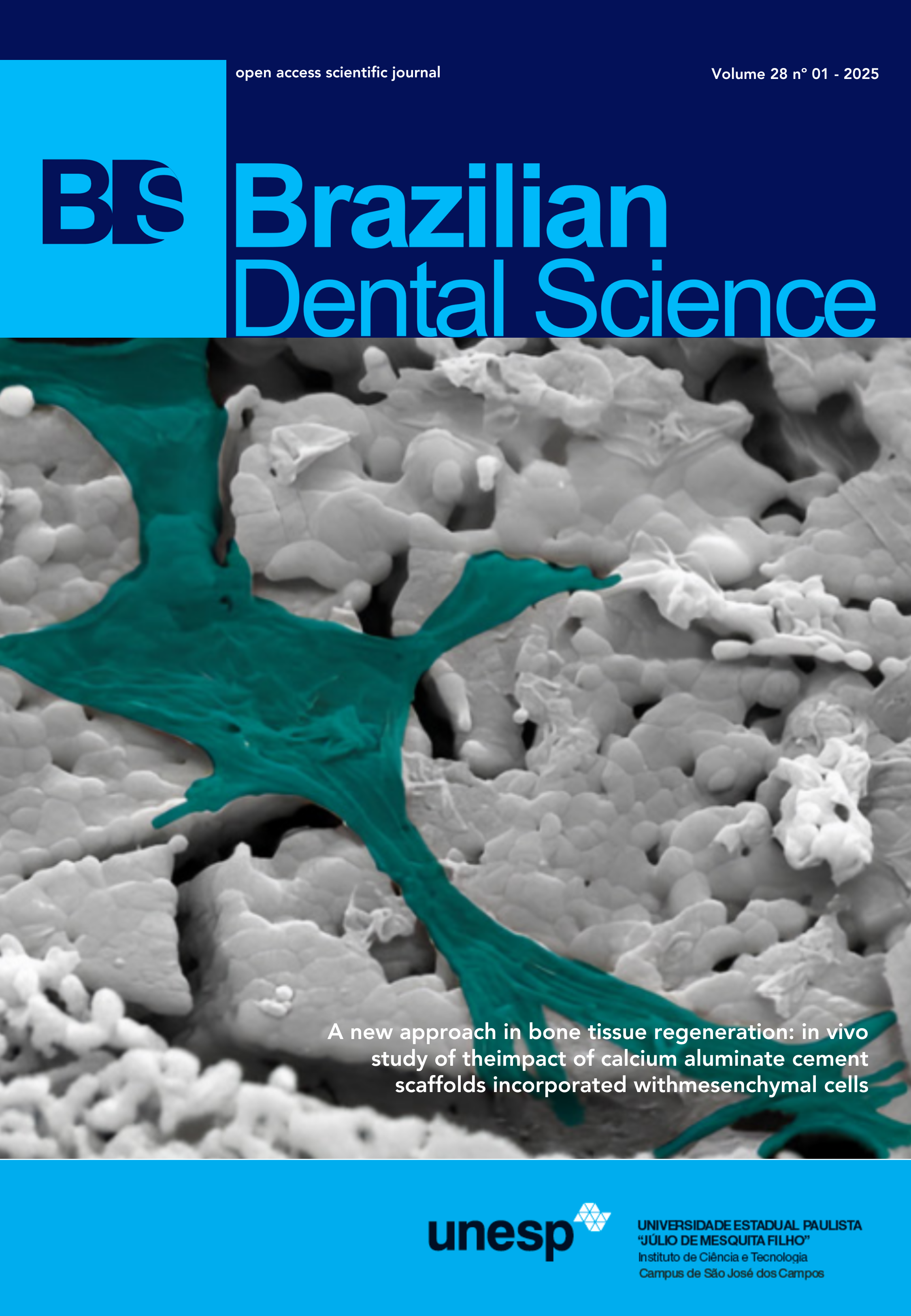Evaluation of desensitizing agents for the control of sensitivity in conventional fixed restorations
DOI:
https://doi.org/10.4322/bds.2025.e4587Abstract
Objective: To evaluate and compare the effectiveness of the desensitizing agents Shield Force Plus, Fluor Protector S and Mi Paste Plus, in reducing post-tooth preparation sensitivity in conventional fixed restorations. Material and Methods: A randomized single-blind, controlled clinical experimental study was conducted with 32 participants requiring fixed metal-ceramic restorations. The participants were divided into four groups: SF (Shield Force Plus), FP (Fluor Protector S), MP (Mi Paste Plus), and Control. The desensitizing agents were applied three times: one day after tooth preparation, during the metal framework trial, and during the bisque trial. Sensitivity was assessed using a visual analog scale (VAS) by applying blasts of cold air in four visits at two-day intervals. To compare the perception of sensitivity between the quotes, the Friedman test was used followed by the Nemenyi Post hoc Test. Decreased sensitivity between desensitizing agents was assessed with the Kruskal- Wallis test, followed by Dunn’s post hoc test. The level was set at 5%. Results: Shield Force Plus reduced tooth sensitivity similarly to Fluor Protector S (p > 0.05) in teeth prepared for fixed prostheses. Additionally, Shield Force Plus was statistically more effective in reducing tooth sensitivity compared to Mi Paste Plus (p < 0.05). Significant differences in tooth sensitivity were noted between the evaluation sessions for all desensitizing agents (p < 0.05). Conclusion: In this study, Shield Force Plus was the most effective desensitizing agent for reducing post-tooth preparation sensitivity, followed by Fluor Protector S.
KEYWORDS
Desensitizing agents; Fixed restoration; Tooth sensitivity; Visual analogue scale; Vital dental preparation.
Downloads
Published
How to Cite
Issue
Section
License
Copyright (c) 2025 Brazilian Dental Science

This work is licensed under a Creative Commons Attribution 4.0 International License.
Brazilian Dental Science uses the Creative Commons (CC-BY 4.0) license, thus preserving the integrity of articles in an open access environment. The journal allows the author to retain publishing rights without restrictions.
=================




























